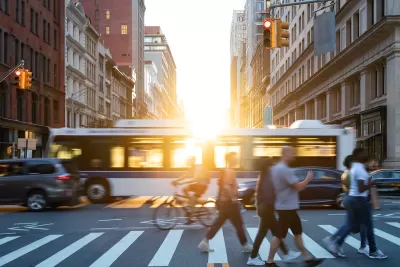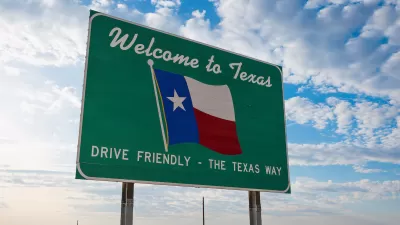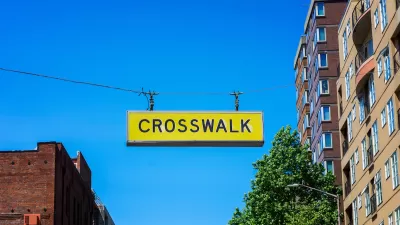Whether it’s a preference for highway expansion, passenger rail, or bike infrastructure, different administrations can shift grantmaking priorities at the federal level.

New research from the Urban Institute examines how much presidential administrations impact federal transportation funding — and it turns out the influence is significant. According to UI researcher Yonah Freemark, “There are different political priorities for different administrations, and we should be thinking about that when having conversations about the role of the president and other people in the federal administration.”
As Dan Zukowski explains in Smart Cities Dive, “The Obama administration favored transit projects while the Trump administration prioritized road expansion, the report says. The Biden administration focused on bike and pedestrian projects to a larger extent than either previous administration.”
The report suggests four ways to make federal funding more equitable and ensure it reaches the communities that need it most: prioritizing applications from low-income communities, assisting communities with the application process to ensure underresourced communities don’t get left behind, assessing the benefits and drawbacks of infrastructure projects, and improving the transparency of federal grantmaking programs.
FULL STORY: How the White House influences transportation grantmaking

Montreal Mall to Become 6,000 Housing Units
Place Versailles will be transformed into a mixed-use complex over the next 25 years.

Planetizen Federal Action Tracker
A weekly monitor of how Trump’s orders and actions are impacting planners and planning in America.

Four Reasons Urban Planners Can’t Ignore AI
It’s no longer a question of whether AI will shape planning, but how. That how is up to us.

Bend, Deschutes County Move to Restrict Major Homeless Encampment
City and county officials are closing off portions of an area known as Juniper Ridge where many unhoused residents find shelter, hoping to direct people to housing and supportive services.

High Housing Costs Driving Down Transit Ridership in LA
When neighborhoods gentrify and displace lower-income residents, transit ridership suffers, new research shows.

Iowa Legalizes Accessory Dwelling Units
A new law will allow property owners to build ADUs on single-family lots starting on July 1.
Urban Design for Planners 1: Software Tools
This six-course series explores essential urban design concepts using open source software and equips planners with the tools they need to participate fully in the urban design process.
Planning for Universal Design
Learn the tools for implementing Universal Design in planning regulations.
City of Mt Shasta
City of Camden Redevelopment Agency
City of Astoria
Transportation Research & Education Center (TREC) at Portland State University
City of Camden Redevelopment Agency
Municipality of Princeton (NJ)
Regional Transportation Commission of Southern Nevada





























